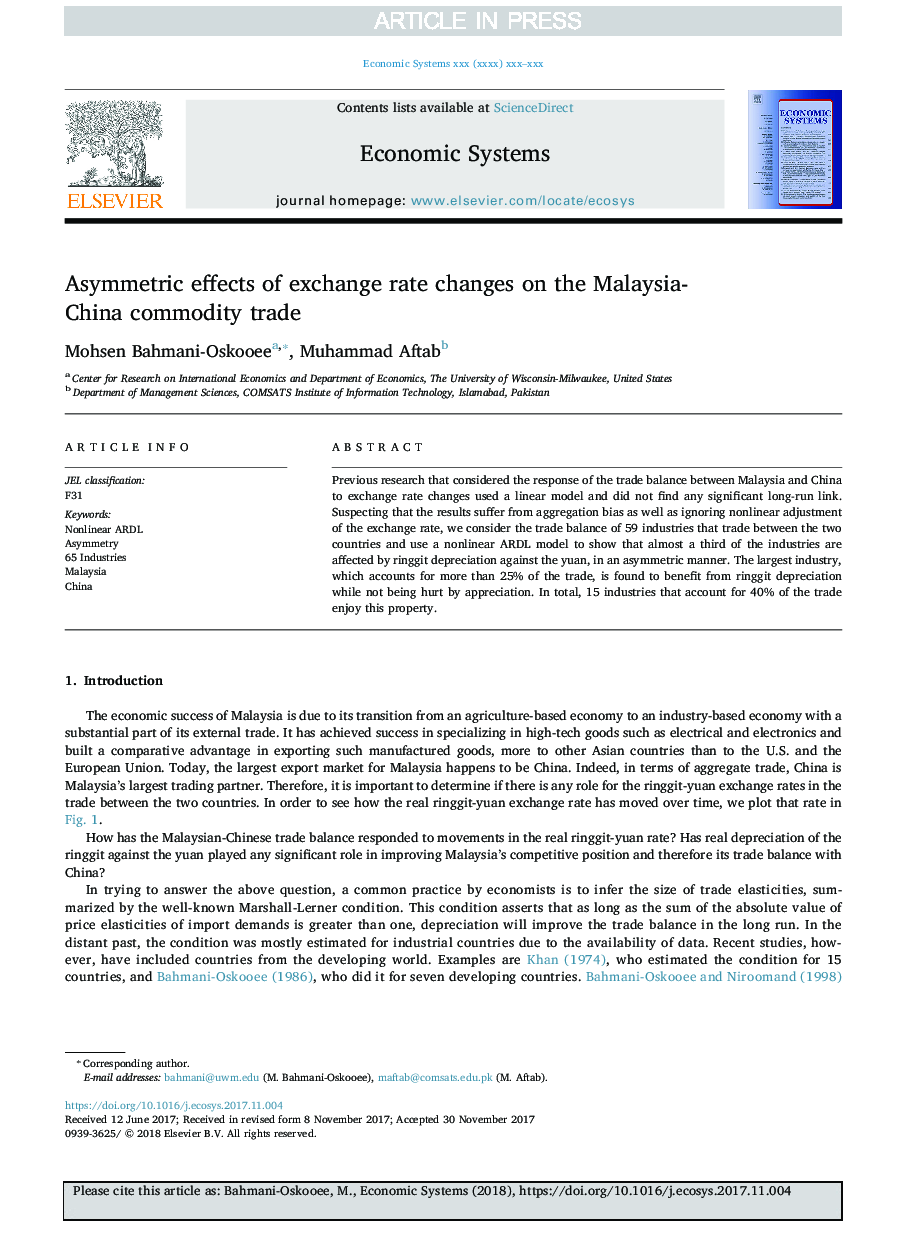| Article ID | Journal | Published Year | Pages | File Type |
|---|---|---|---|---|
| 8942306 | Economic Systems | 2018 | 17 Pages |
Abstract
Previous research that considered the response of the trade balance between Malaysia and China to exchange rate changes used a linear model and did not find any significant long-run link. Suspecting that the results suffer from aggregation bias as well as ignoring nonlinear adjustment of the exchange rate, we consider the trade balance of 59 industries that trade between the two countries and use a nonlinear ARDL model to show that almost a third of the industries are affected by ringgit depreciation against the yuan, in an asymmetric manner. The largest industry, which accounts for more than 25% of the trade, is found to benefit from ringgit depreciation while not being hurt by appreciation. In total, 15 industries that account for 40% of the trade enjoy this property.
Related Topics
Social Sciences and Humanities
Economics, Econometrics and Finance
Economics and Econometrics
Authors
Mohsen Bahmani-Oskooee, Muhammad Aftab,
